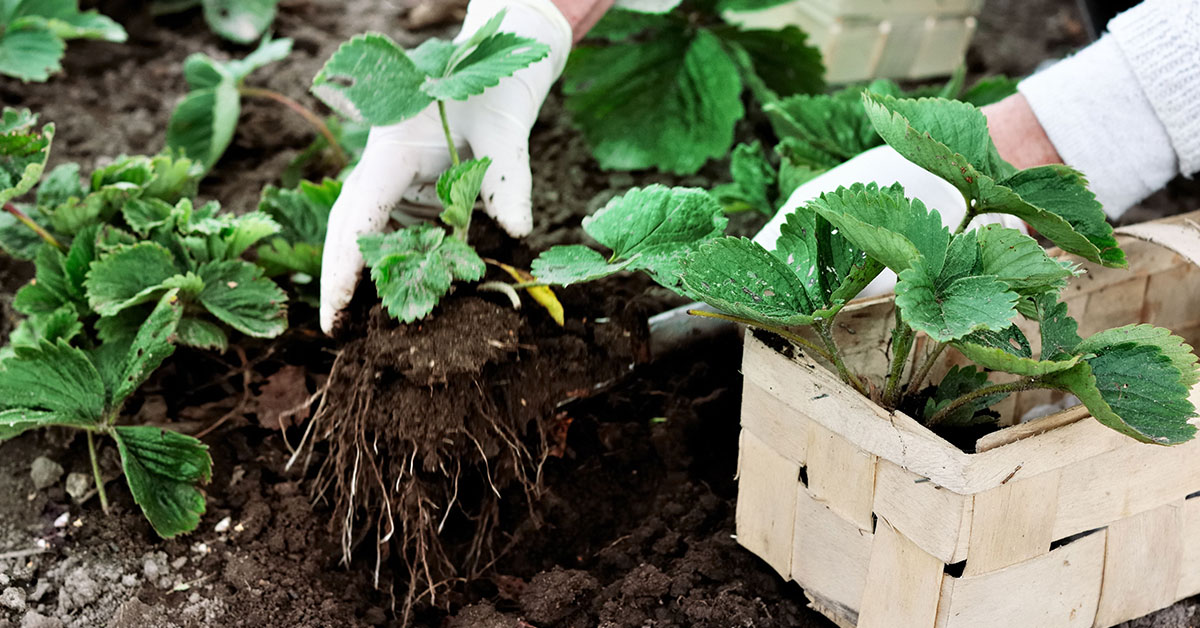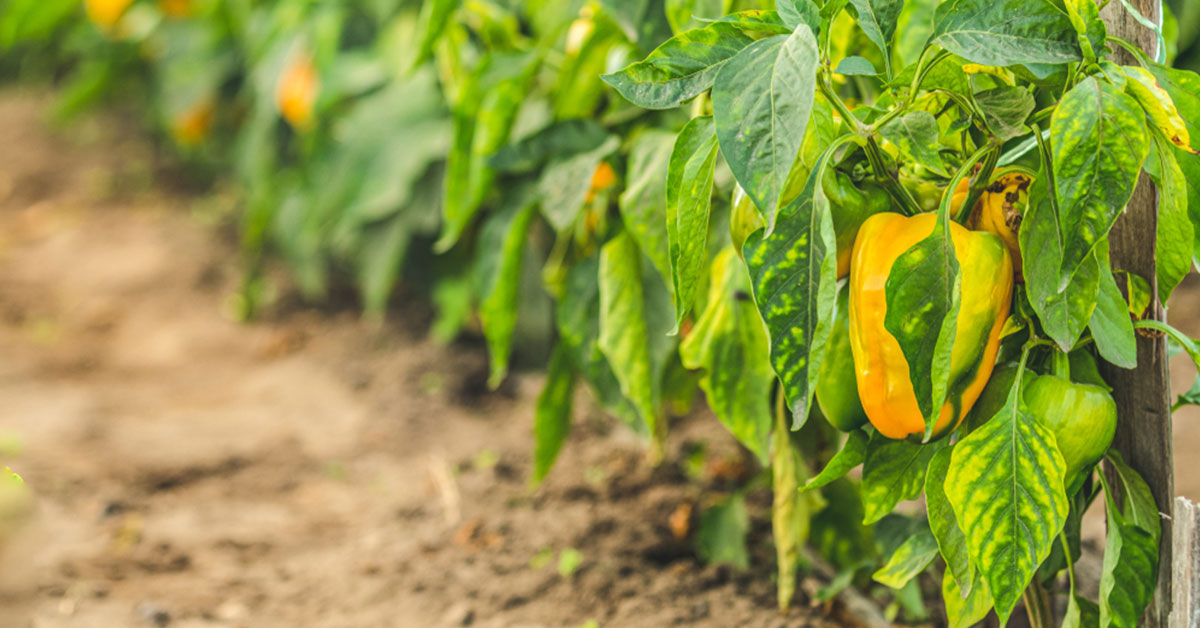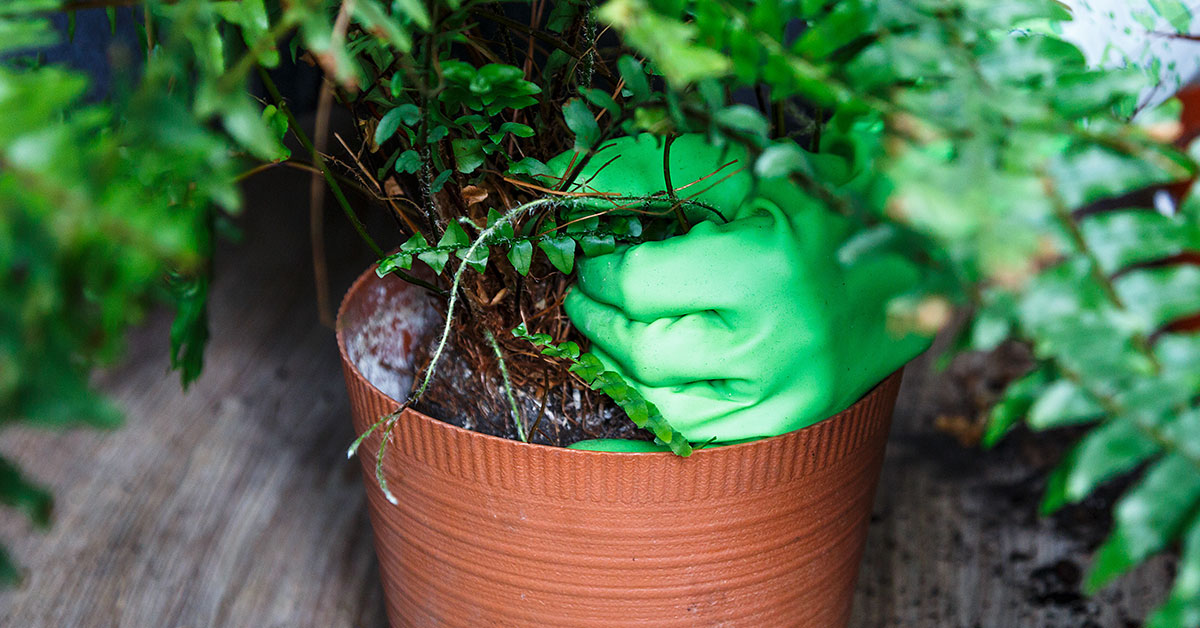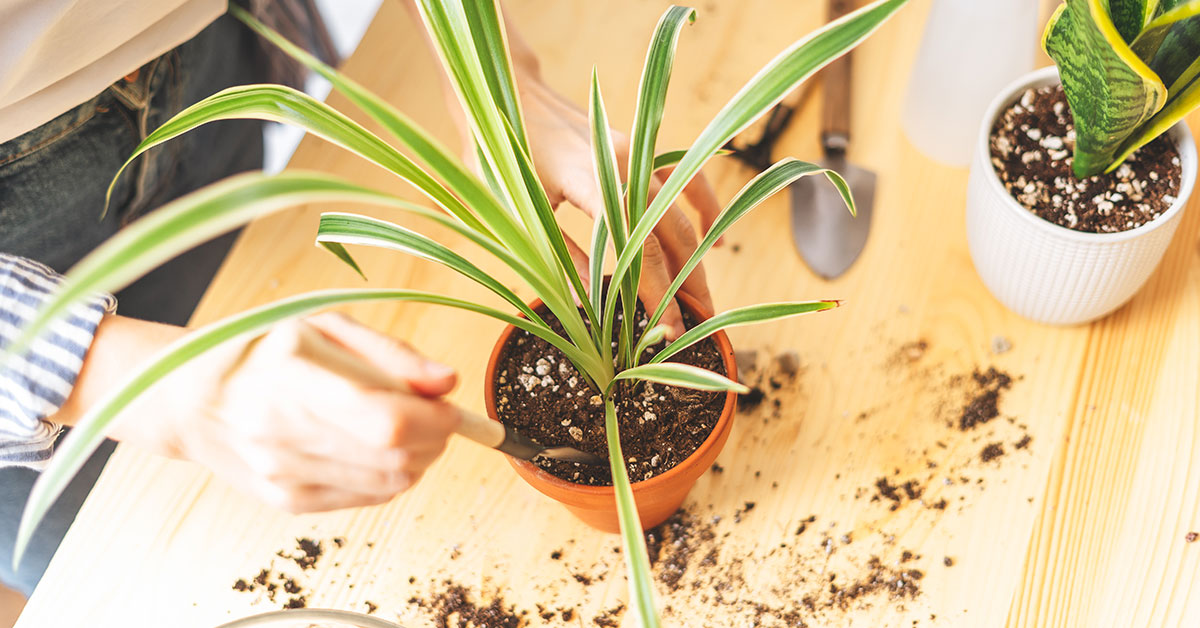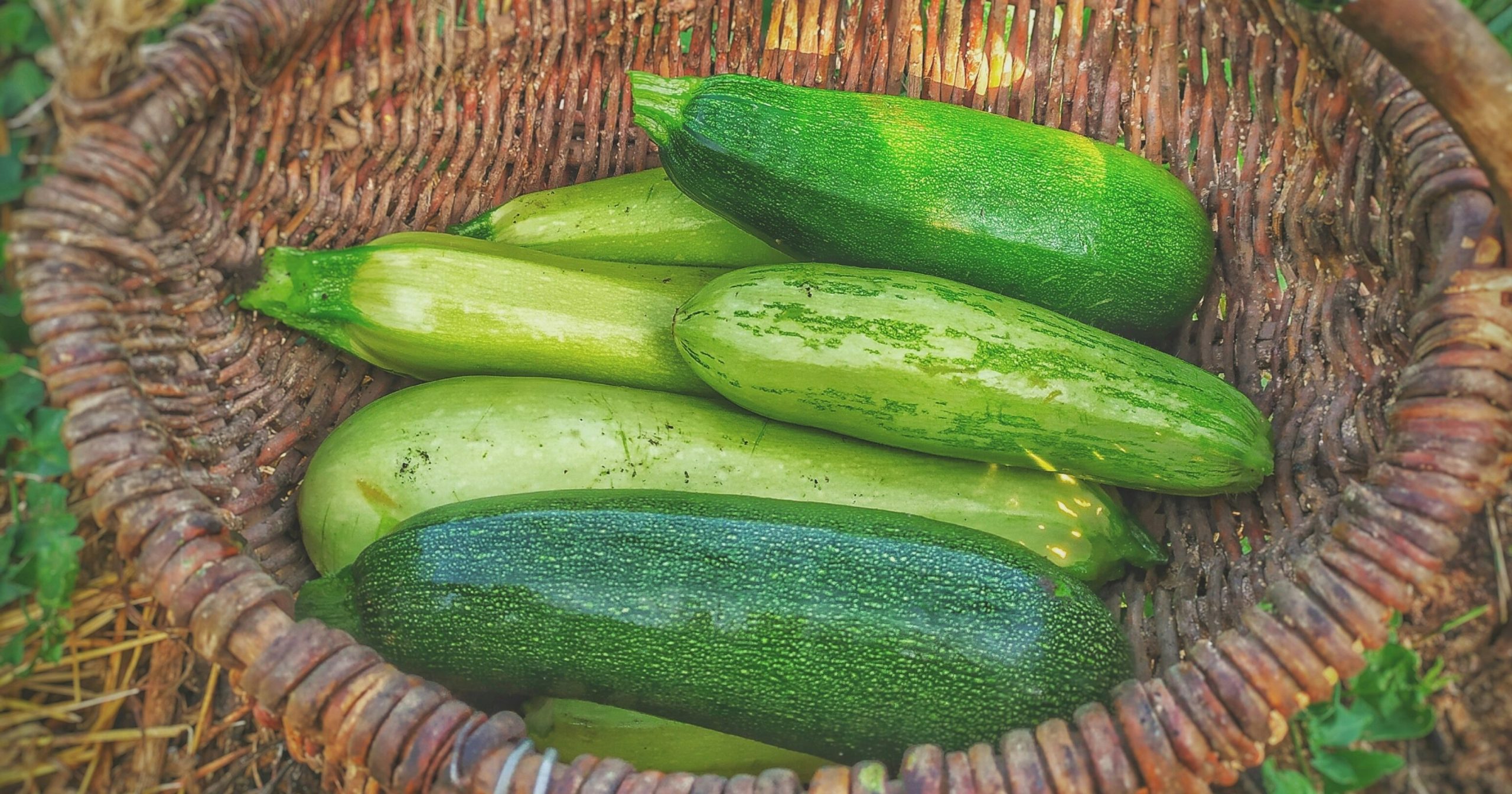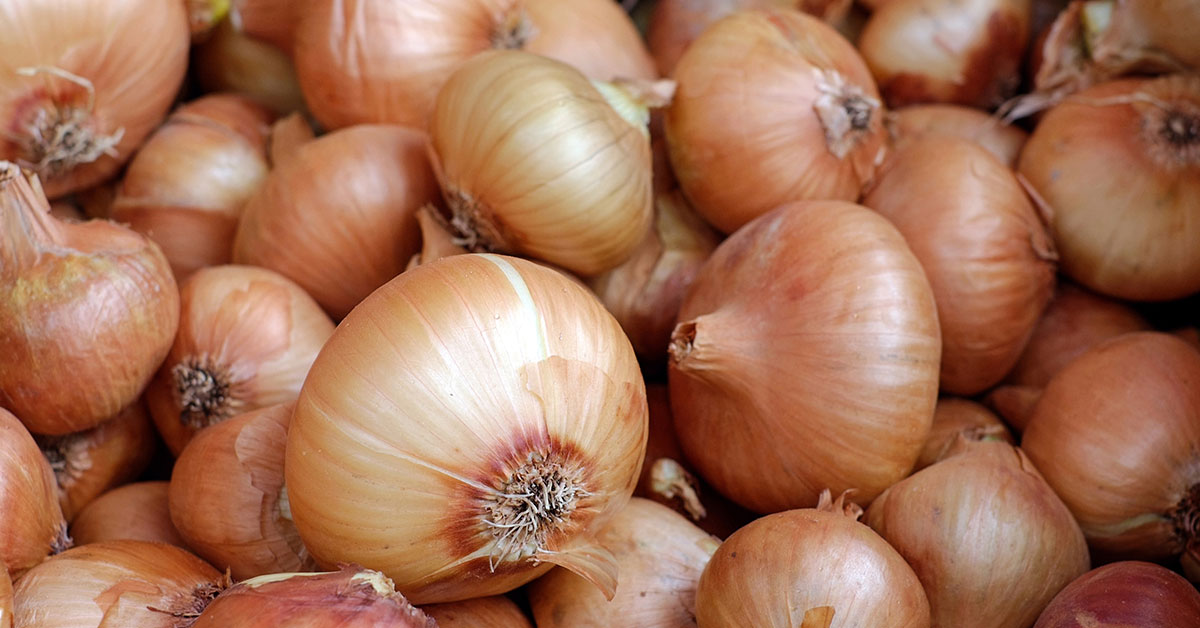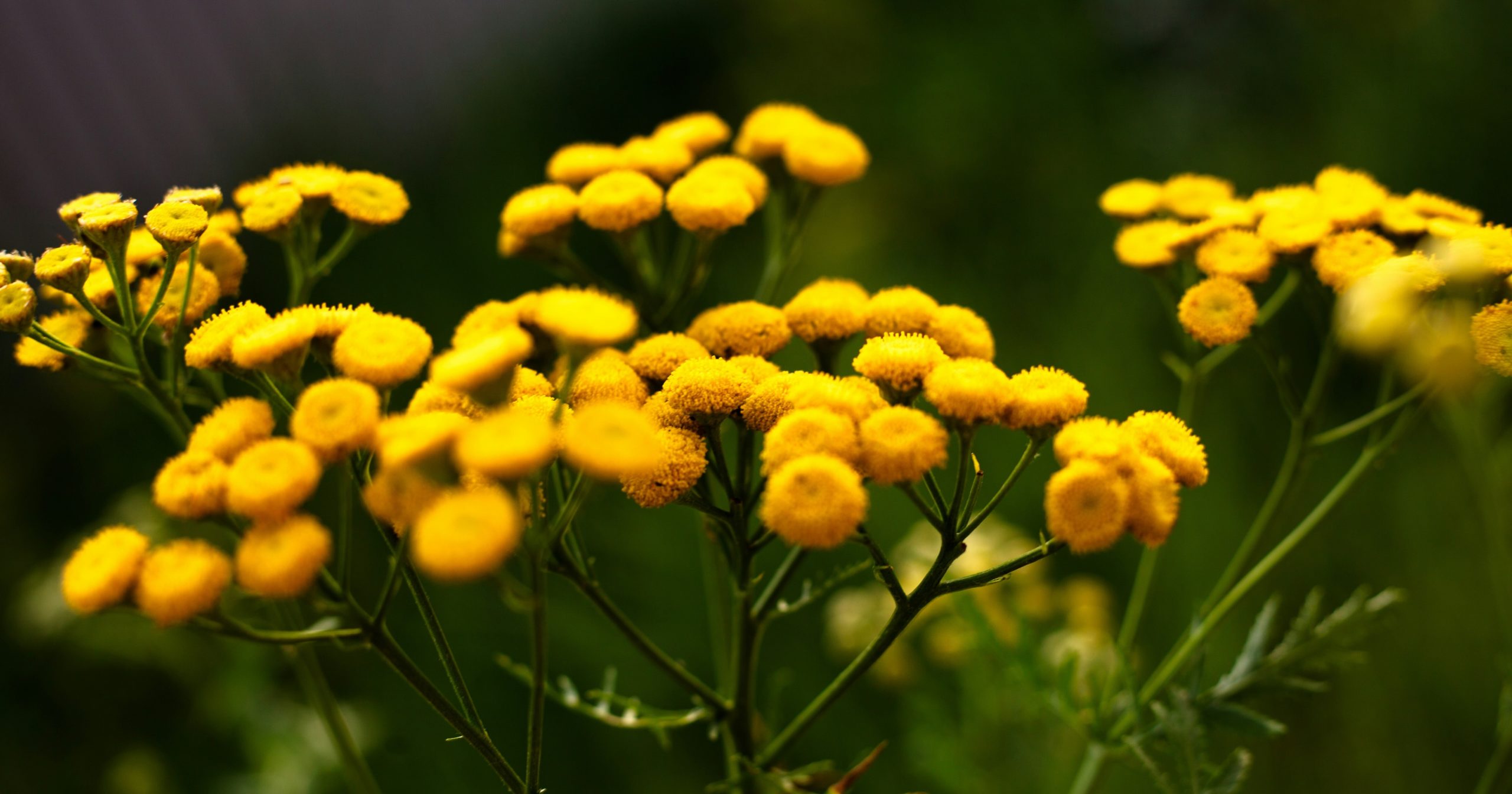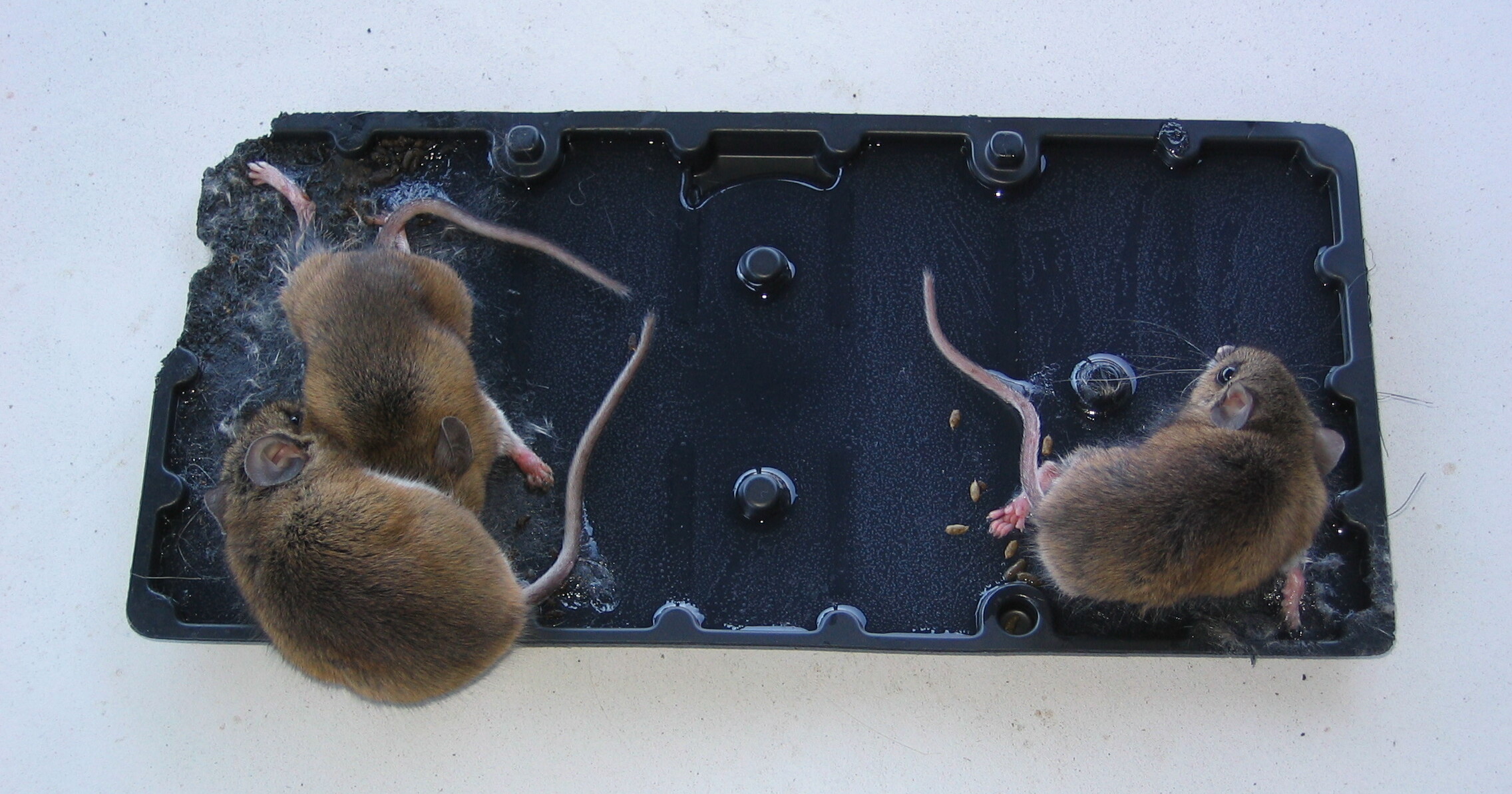Welcome to the fascinating world of Sequoia Strawberries! In this
comprehensive blog post, we will delve into the depths of this exquisite
fruit, uncovering its intriguing history, unique characteristics, culinary
uses, growing methods, and much more. Whether you are a strawberry enthusiast,
a farmer looking to diversify your crops, or simply intrigued by the wonders
of nature’s bounty, this article will provide you with a deep understanding of
the Sequoia Strawberry.
What is the Sequoia Strawberry?
The Sequoia Strawberry, scientifically known as Fragaria × ananassa , is a
luscious and highly sought-after fruit that belongs to the Rosaceae family.
Renowned for its exceptional flavor, vibrant red color, and juicy texture,
this strawberry variety has captured the hearts and palates of strawberry
lovers worldwide. The Sequoia Strawberry is hailed for its balance of
sweetness and acidity, making it a perfect addition to a wide range of
culinary creations.
The History and Origins of the Sequoia Strawberry
To truly appreciate the Sequoia Strawberry, we must first explore its
captivating history and origins. This variety traces its roots back to the
fertile fields of California, where it was developed through meticulous
breeding techniques. The Sequoia Strawberry is a result of careful cross-
pollination and selection by skilled horticulturists, aiming to create a
strawberry with exceptional taste, size, and disease resistance.
Unique Characteristics and Flavor Profile of the Sequoia Strawberry
What sets the Sequoia Strawberry apart from other strawberry varieties? Let’s
delve into its unique characteristics and flavor profile. One of the
distinguishing features of the Sequoia Strawberry is its impressive size,
often larger than other common varieties. Additionally, its glossy and deeply
red skin adds to its visual allure. However, it is the flavor that truly sets
the Sequoia Strawberry apart. With a harmonious blend of sweetness and
tartness, this strawberry variety tantalizes the taste buds with every bite.
Its succulent flesh bursts with natural juices, providing a delightful sensory
experience.
Growing the Sequoia Strawberry
If you’re considering adding Sequoia Strawberries to your garden or farm,
understanding the optimal growing conditions is crucial. These strawberries
thrive in moderate climates, preferring temperatures between 60 to 80 degrees
Fahrenheit. They require well-draining soil with a slightly acidic pH level,
typically ranging from 5.5 to 6.5. Proper preparation of the soil, including
amendments and organic matter, is essential for establishing healthy plants.
To propagate Sequoia Strawberries, you have several options, including
purchasing young plants from reputable nurseries or starting from seeds.
Planting them at the right time and spacing them adequately ensures optimal
growth and productivity. Regular care and maintenance, such as watering,
mulching, and fertilizing, are vital for robust plants and bountiful harvests.
However, like all crops, Sequoia Strawberries are susceptible to various pests
and diseases, requiring proactive management strategies.
Harvesting and Storing Sequoia Strawberries for Optimal Flavor
The joy of growing Sequoia Strawberries culminates in the harvest season, when
you can finally savor the fruits of your labor. Knowing the right time to
harvest is crucial, as strawberries reach their peak flavor and sweetness when
fully ripe. The Sequoia Strawberry can be identified by its vibrant red color,
firm texture, and intense aroma. Gently plucking the strawberries from the
plants, taking care to avoid any bruising or damage, ensures that you preserve
their quality.
Once harvested, proper storage techniques are essential to maintain the flavor
and freshness of Sequoia Strawberries. These delicate fruits are best consumed
within a few days of picking, as they have a relatively short shelf life.
Storing them in a cool and well-ventilated environment, preferably at
temperatures around 34 to 36 degrees Fahrenheit, helps prolong their quality.
Alternatively, you can freeze or preserve the strawberries through various
methods, allowing you to enjoy their delectable taste throughout the year.
In the next section of this blog post, we will explore the diverse culinary
uses and mouthwatering recipes that showcase the Sequoia Strawberry’s
versatility. Prepare to be inspired as we uncover the delightful ways in which
these strawberries can be incorporated into desserts, beverages, salads, and
more. Join us on this culinary journey and discover the endless possibilities
of the Sequoia Strawberry!
The History and Origins of the Sequoia Strawberry
To truly appreciate the Sequoia Strawberry, it is essential to delve into its
captivating history and origins. This remarkable strawberry variety can be
traced back to the fertile fields of California, where it was meticulously
developed through years of selective breeding and hybridization. The quest to
create a strawberry with exceptional taste, size, and disease resistance led
to the birth of the Sequoia Strawberry.
The story of the Sequoia Strawberry begins in the early 20th century when
scientists and horticulturists in California sought to improve strawberry
varieties prevalent at the time. They aimed to create a strawberry that would
not only satisfy the taste buds but also withstand the challenges posed by
pests, diseases, and varying climatic conditions. This endeavor led to the
development of several notable strawberry cultivars, with the Sequoia
Strawberry emerging as one of the most successful outcomes.
The Sequoia Strawberry owes its name to the majestic giant sequoia trees that
dot the landscape of California. Just like these towering trees, the
strawberry variety exudes strength, resilience, and longevity. It took years
of careful selection and cross-pollination to harness the desired traits and
create a strawberry that would leave an indelible mark on the world of
horticulture.
The hybridization process involved carefully selecting parent plants with
desirable attributes, such as flavor, size, color, and disease resistance.
Through controlled pollination, the scientists were able to combine the best
traits of different varieties, resulting in offspring with improved qualities.
The rigorous testing and evaluation of these offspring led to the
identification of the Sequoia Strawberry as a standout variety.
One of the defining characteristics of the Sequoia Strawberry is its ability
to adapt to various growing conditions. This versatility played a significant
role in its widespread adoption, as farmers and gardeners sought a strawberry
that could thrive in diverse climates and soil types. The success of the
Sequoia Strawberry can be attributed not only to its remarkable taste but also
to its ability to withstand the challenges posed by pests, diseases, and
environmental factors.
Over the years, the Sequoia Strawberry has gained popularity and recognition
not only in California but also across the globe. Its reputation for
exceptional flavor and visually appealing appearance has made it a favorite
among strawberry enthusiasts, chefs, and consumers alike. The legacy of this
remarkable strawberry variety continues to grow, as more and more people
discover the joy of cultivating and savoring the fruits of their labor.
In the next section of this blog post, we will explore the unique
characteristics and flavor profile of the Sequoia Strawberry in greater
detail. Get ready to dive deeper into the sensory experience that this
extraordinary fruit offers. From its impressive size and vibrant red color to
its tantalizing blend of sweetness and tartness, the Sequoia Strawberry is
truly a treasure to behold. Stay tuned as we unravel the secrets behind its
irresistible appeal.
Unique Characteristics and Flavor Profile of the Sequoia Strawberry
The Sequoia Strawberry stands apart from other strawberry varieties due to its
unique characteristics and exceptional flavor profile. This remarkable fruit
captivates the senses with its vibrant red color, glossy appearance, and
enticing aroma. But it is the combination of taste and texture that truly sets
the Sequoia Strawberry apart, making it a favorite among strawberry
enthusiasts and culinary experts.
One of the distinguishing features of the Sequoia Strawberry is its impressive
size. Compared to other common strawberry varieties, the Sequoia Strawberry
tends to be larger and more robust. This generous size not only adds visual
appeal but also contributes to the overall eating experience. Each bite offers
a satisfying mouthful, allowing for a more indulgent strawberry experience.
The vibrant red color of the Sequoia Strawberry is another characteristic that
catches the eye. Its glossy skin, reminiscent of a freshly polished gem,
reflects the care and attention given to its cultivation. This radiant hue is
not merely superficial; it also hints at the rich flavors waiting to burst
forth with each bite. The intense red color of the Sequoia Strawberry is a
testament to its ripeness and quality.
When it comes to flavor, the Sequoia Strawberry truly shines. Its taste
profile is a delicate balance of sweetness and tartness, creating a symphony
of flavors on the palate. The sweetness is at once pronounced and natural,
never overpowering or cloying. This harmonious blend is complemented by a
subtle tartness that adds depth and complexity to the overall taste
experience. The Sequoia Strawberry’s flavor is often described as well-rounded
and satisfying, leaving a lingering sweetness that keeps you coming back for
more.
The texture of the Sequoia Strawberry is equally noteworthy. Each bite offers
a delightful combination of juiciness and firmness. The flesh of the
strawberry is succulent and bursting with natural juices, providing a
refreshing and satisfying sensation. The firmness of the fruit adds a pleasant
bite, ensuring that every mouthful is a delightful experience. Whether enjoyed
on its own or incorporated into a variety of culinary creations, the Sequoia
Strawberry’s texture is sure to impress.
The exceptional characteristics and flavor profile of the Sequoia Strawberry
make it a versatile ingredient in both sweet and savory dishes. Its robust
size, vibrant color, and well-balanced flavor make it an excellent choice for
showcasing in desserts, such as cakes, pies, and tarts. The Sequoia
Strawberry’s natural sweetness pairs perfectly with creamy textures,
chocolate, and other fruits. Additionally, its subtle tartness adds a
refreshing element to salads, salsas, and even savory dishes like grilled
meats or cheese pairings.
As we continue our exploration of the Sequoia Strawberry, we will delve into
the diverse culinary uses and mouthwatering recipes that allow this remarkable
fruit to shine. From traditional strawberry shortcakes to innovative cocktails
and refreshing summer salads, the Sequoia Strawberry’s unique characteristics
and flavor profile offer endless opportunities for culinary creativity. Join
us on this culinary journey as we uncover the delightful ways in which the
Sequoia Strawberry can elevate your dining experience.
Growing the Sequoia Strawberry
If you’re considering adding Sequoia Strawberries to your garden or farm,
understanding the optimal growing conditions and cultivation techniques is
essential. These strawberries, known for their exceptional flavor and size,
require careful attention to ensure healthy plants and bountiful harvests. In
this section, we will explore the climate and soil requirements, planting
methods, care and maintenance tips, as well as pest and disease management
strategies for growing Sequoia Strawberries.
Climate and Soil Requirements for Growing Sequoia Strawberries
Sequoia Strawberries thrive in moderate climates, preferring temperatures
between 60 to 80 degrees Fahrenheit (15 to 27 degrees Celsius). They are well-
suited for regions with mild winters and moderate summers, making them an
excellent choice for many temperate areas. However, with proper care and
attention, they can also be grown in slightly cooler or warmer climates.
When it comes to soil, Sequoia Strawberries prefer well-draining soil with a
slightly acidic pH level. Ideally, the soil pH should range from 5.5 to 6.5.
This slightly acidic environment helps the plants absorb essential nutrients
efficiently. Conducting a soil test before planting can provide valuable
information about the pH levels and nutrient composition, allowing you to make
any necessary adjustments to optimize growing conditions for your Sequoia
Strawberries.
Planting and Propagation Methods for Sequoia Strawberries
There are different methods of obtaining Sequoia Strawberry plants for your
garden or farm. One common method is to purchase young plants from reputable
nurseries. These plants are usually sold as bare-root or potted plants, and
they are ready to be planted directly into the ground or containers. When
selecting nursery plants, look for healthy specimens with well-developed root
systems and disease-free foliage.
Another option for obtaining Sequoia Strawberries is to start from seeds.
While this method requires more time and patience, it allows you to experience
the complete growth cycle of the strawberry plant. Starting from seeds also
gives you greater control over the selection and propagation of specific
cultivars or hybrids.
Regardless of the method chosen, planting Sequoia Strawberries requires
careful consideration of spacing and location. Adequate spacing between plants
ensures proper air circulation and minimizes the risk of disease. Typically,
plants should be spaced about 12 to 18 inches apart, with rows spaced around
24 to 36 inches apart. This spacing allows the plants to receive ample
sunlight and nutrients, promoting healthy growth and optimal fruit production.
Essential Care and Maintenance Tips for Healthy Strawberry Plants
To ensure healthy and productive Sequoia Strawberry plants, proper care and
maintenance are crucial. Regular watering is essential, especially during
periods of dry weather or when plants are establishing their root systems.
Strawberries have shallow roots, so they require consistent moisture without
being waterlogged. Watering at the base of the plants, early in the day, helps
prevent fungal diseases and ensures the plants have access to water throughout
the day.
Mulching is another vital aspect of strawberry plant care. Applying a layer of
organic mulch around the plants helps retain moisture, suppresses weed growth,
and regulates soil temperature. Straw, wood chips, or shredded leaves make
excellent mulch materials. Ensure that the mulch is not placed directly
against the crown of the plants, as this can lead to rot or pest infestations.
Fertilization is necessary to provide the essential nutrients strawberries
need for healthy growth and fruit production. Before planting, it is
recommended to incorporate organic matter, such as compost or well-rotted
manure, into the soil. This ensures a nutrient-rich foundation for the plants.
During the growing season, additional fertilization can be done using a
balanced organic fertilizer, following the manufacturer’s instructions. Avoid
over-fertilization, as this can lead to excess foliage growth at the expense
of fruit production.
Pests and Diseases that Affect Sequoia Strawberries and How to Manage Them
Like any other crop, Sequoia Strawberries are susceptible to various pests and
diseases. Common pests that can affect strawberry plants include aphids,
slugs, snails, and spider mites. Regular inspection of the plants and prompt
action can help prevent infestations from becoming severe. Introducing natural
predators, such as ladybugs or lacewings, can also aid in controlling pest
populations.
Fungal diseases, such as gray mold (Botrytis cinerea) and powdery mildew
(Podosphaera aphanis), can be a challenge for strawberry growers. Proper air
circulation, adequate spacing, and avoiding over-watering can help reduce the
risk of fungal infections. If necessary, organic fungicides or biological
controls can be used in accordance with the instructions provided.
Viral diseases, such as Strawberry Mosaic Virus and Tomato Spotted Wilt Virus,
can also affect Sequoia Strawberries. These diseases are typically transmitted
through infected planting material or by insect vectors. Using certified
disease-free plants and practicing good sanitation measures can help prevent
the spread of viral diseases.
Regular monitoring, proper sanitation practices, and a proactive approach to
pest and disease management are essential for maintaining healthy Sequoia
Strawberry plants and ensuring a successful harvest.
Harvesting and Storing Sequoia Strawberries for Optimal Flavor
The reward for proper care and maintenance of your Sequoia Strawberry plants
is the bountiful harvest of delicious, ripe strawberries. Knowing when and how
to harvest the fruits at their peak of flavor is crucial for an enjoyable
eating experience.
Sequoia Strawberries are typically ready for harvest when they have reached
their full color and firmness. The berries should be a vibrant red, indicating
their ripeness. Gently tug on the strawberries, and if they release easily
from the stem without resistance, they are ready to be picked. It is
recommended to use clean, sanitized scissors or pruners to cut the stem about
half an inch above the fruit.
To maintain the quality and flavor of freshly picked Sequoia Strawberries, it
is best to consume them as soon as possible. If immediate consumption is not
possible, store the strawberries in the refrigerator. Place them in a shallow
container lined with paper towels to absorb excess moisture. Avoid washing the
berries until just before use, as excess moisture can contribute to spoilage.
When stored properly, Sequoia Strawberries can retain their flavor and quality
for a few days.
In the next section of this blog post, we will dive into the mouthwatering
culinary uses and delectable recipes that showcase the versatility of Sequoia
Strawberries. From classic desserts to refreshing beverages and creative
savory dishes, these strawberries offer endless possibilities to tantalize
your taste buds. Get ready to be inspired and discover the true potential of
the Sequoia Strawberry!
Culinary Uses and Recipes with Sequoia Strawberries
The Sequoia Strawberry’s exceptional flavor and vibrant characteristics make
it a versatile ingredient in a wide array of culinary creations. From classic
desserts to innovative cocktails and savory dishes, these strawberries lend
themselves to countless delightful recipes. In this section, we will explore
the diverse culinary uses of Sequoia Strawberries and provide you with
mouthwatering recipes to inspire your own gastronomic adventures.
Exploring the Versatility of Sequoia Strawberries in Culinary Delights
Sequoia Strawberries are a chef’s dream, offering a range of flavors and
textures that can elevate any dish. Their natural sweetness and subtle
tartness make them ideal for both sweet and savory applications. In sweet
dishes, these strawberries add a burst of vibrant color, intense flavor, and a
touch of elegance. In savory dishes, they provide a surprising and delightful
twist, balancing out rich or savory flavors with their refreshing taste.
These strawberries are a perfect match for classic desserts such as strawberry
shortcakes, tarts, and pies. The Sequoia Strawberry’s large size and vibrant
color make it a visually stunning addition to these sweet treats. Paired with
fresh whipped cream or a dollop of vanilla ice cream, each bite becomes a
symphony of flavors and textures.
For a modern twist, try incorporating Sequoia Strawberries into more
contemporary desserts. Think strawberry macarons, strawberry cheesecake bites,
or even strawberry-infused chocolate truffles. The possibilities are endless,
allowing you to experiment with different flavor combinations and techniques.
But the culinary journey with Sequoia Strawberries doesn’t end with desserts
alone. These versatile berries can also be used in salads, beverages, and
savory dishes, adding a unique touch to your culinary repertoire. Imagine a
refreshing summer salad with a medley of mixed greens, goat cheese, candied
pecans, and sliced Sequoia Strawberries, drizzled with a tangy balsamic
vinaigrette. The sweetness of the strawberries complements the savory notes of
the cheese and the crunch of the nuts, creating a harmonious blend of flavors.
In the realm of beverages, Sequoia Strawberries can be transformed into
refreshing lemonades, infused waters, or even cocktails. Muddle them with
fresh herbs like basil or mint, add a splash of citrus juice, and top with
sparkling water or your favorite spirit for a delightful and invigorating
drink. These beverages are not only visually appealing but also a fantastic
way to quench your thirst on a hot summer day.
When it comes to savory creations, Sequoia Strawberries can be used in a
multitude of ways. Create a savory salsa by combining diced strawberries,
jalapeños, red onions, lime juice, and cilantro. This vibrant and tangy salsa
pairs perfectly with grilled fish or chicken, adding a burst of freshness and
complexity to the dish. Alternatively, use sliced Sequoia Strawberries as a
topping for crostini, along with creamy goat cheese and a drizzle of balsamic
reduction. The combination of flavors and textures will leave your taste buds
craving more.
Popular Desserts and Baked Goods Featuring Sequoia Strawberries
Sequoia Strawberries lend themselves beautifully to a variety of desserts and
baked goods. Their natural sweetness and robust flavor make them a perfect
complement to cakes, pastries, and other sweet treats. Let’s explore some
popular recipes that highlight the exquisite taste of these strawberries:
1. Sequoia Strawberry Shortcake
A classic dessert that celebrates the natural sweetness of fresh strawberries,
Sequoia Strawberry shortcake is a timeless favorite. Start by slicing the
strawberries and tossing them with sugar to macerate and release their juices.
Prepare a batch of homemade shortcakes, either traditional biscuits or sponge
cake, and assemble the dessert by layering the shortcake, macerated
strawberries, and whipped cream. The result is a heavenly combination of
buttery, crumbly cake, juicy strawberries, and fluffy cream.
2. Sequoia Strawberry Tart
For an elegant dessert that showcases the beauty of Sequoia Strawberries, try
making a strawberry tart. Begin by preparing a buttery tart shell or using a
pre-made one for convenience. Fill the tart shell with a luscious pastry cream
or a smooth layer of mascarpone cheese. Arrange the sliced strawberries on top
of the cream, creating a visually stunning pattern. Finish with a light glaze
made from heated apricot jam for an added touch of shine. The result is a
masterpiece of flavors and textures, with the sweet strawberries complementing
the creamy filling and buttery crust.
3. Sequoia Strawberry Pavlova
Pavlova, a dessert named after the Russian ballerina, is a showstopper that
combines crisp meringue, silky whipped cream, and fresh fruits. To create a
Sequoia Strawberry pavlova, start by whipping egg whites and sugar into a
glossy meringue. Spread the meringue into a round shape on a baking sheet and
bake until crisp on the outside and marshmallow-like on the inside. Once
cooled, top the pavlova with whipped cream and arrange the sliced strawberries
on top. The contrast of textures and flavors will leave you in awe.
These are just a few examples of the many ways in which Sequoia Strawberries
can be used to create unforgettable desserts and baked goods. Let your
imagination run wild and experiment with different recipes, adapting them to
your personal taste preferences and the occasion at hand.
Creative Uses of Sequoia Strawberries in Salads, Beverages, and Cocktails
Sequoia Strawberries add a burst of freshness and flavor when incorporated
into salads, beverages, and cocktails. Their sweet and tart notes create a
delightful contrast against other ingredients, making them a versatile choice
for a range of culinary creations.
1. Sequoia Strawberry Spinach Salad
Incorporate Sequoia Strawberries into a refreshing spinach salad for a burst
of color and flavor. Combine fresh baby spinach leaves, sliced strawberries,
crumbled feta cheese, and toasted nuts. Drizzle with a light vinaigrette made
from olive oil, balsamic vinegar, honey, and Dijon mustard. This salad offers
a tantalizing combination of textures, with the sweetness of the strawberries
balancing the earthiness of the spinach and the tanginess of the cheese.
2. Sequoia Strawberry Lemonade
Quench your thirst with a refreshing glass of homemade Sequoia Strawberry
lemonade. Start by blending fresh strawberries with lemon juice and a touch of
honey or sugar to sweeten. Strain the mixture to remove any seeds or pulp, and
then mix it with cold water. Serve over ice, garnished with a sprig of mint or
a slice of lemon. This vibrant and tangy drink is perfect for a summer
gathering or a simple afternoon treat.
3. Sequoia Strawberry Mojito
Put a twist on the classic mojito by muddling Sequoia Strawberries with fresh
mint leaves, lime juice, and simple syrup. Add white rum and crushed ice, and
top it off with sparkling water. Give it a gentle stir, and garnish with a
sprig of mint and a strawberry slice. The Sequoia Strawberry enhances the
traditional mojito flavors, infusing the drink with a natural sweetness and a
vibrant hue.
These are just a few examples of how Sequoia Strawberries can elevate your
salads, beverages, and cocktails. Feel free to experiment with different
combinations and flavors to create your own signature dishes and drinks.
Preserving the Freshness of Sequoia Strawberries through Jams and Preserves
Preserving the freshness and flavor of Sequoia Strawberries allows you to
enjoy their delightful taste long after the harvest season has ended. Making
homemade strawberry jams and preserves is a wonderful way to extend the
enjoyment of these strawberries throughout the year. Here’s a simple recipe to
get you started:
Sequoia Strawberry Jam
Ingredients: – 4 cups of Sequoia Strawberries, hulled and chopped – 3
cups of granulated sugar – 2 tablespoons of lemon juice – 1 teaspoon of
lemon zest
Instructions:
In a large saucepan, combine the chopped strawberries,
sugar, lemon juice, and lemon zest. Stir well to combine. 2. Place the
saucepan over medium heat and bring the mixture to a simmer. Cook, stirring
occasionally, until the strawberries have softened and the mixture thickens,
usually about 20-25 minutes. 3. To test if the jam is ready, place a small
amount on a chilled plate and let it cool for a few seconds. If it wrinkles
when pushed with your finger, it is done. If not, continue to cook for a few
more minutes and test again. 4. Once the jam reaches the desired consistency,
remove the saucepan from the heat and let it cool for a few minutes. 5. Pour
the jam into sterilized jars, leaving about 1/4 inch of headspace. Seal the
jars and process them in a water bath canner according to the manufacturer’s
instructions. 6. Allow the jars to cool completely before storing them in a
cool, dark place. The jam can be stored for up to a year.
Homemade strawberry jam not only captures the essence of the Sequoia
Strawberry but also makes a delightful gift to share with friends and family.
Spread it on toast, scones, or use it as a topping for pancakes and waffles to
relish the flavor of Sequoia Strawberries all year round.
Nutritional Benefits and Health Value of Consuming Sequoia Strawberries
Beyond their delectable taste, Sequoia Strawberries offer a plethora of
nutritional benefits, making them a guilt-free indulgence. These berries are
not only low in calories but also packed with essential vitamins, minerals,
and antioxidants that support overall health and well-being.
Sequoia Strawberries are an excellent source of vitamin C, which plays a
crucial role in boosting the immune system, promoting collagen production, and
supporting healthy skin. They also provide a good amount of dietary fiber,
aiding in digestion and promoting feelings of satiety. Additionally,
strawberries contain significant levels of manganese, potassium, and folate,
which are essential for various bodily functions, including nerve function,
heart health, and red blood cell production.
Antioxidants play a vital role in protecting the body against oxidative stress
and reducing the risk of chronic diseases. Sequoia Strawberries are rich in
anthocyanins, flavonoids, and other antioxidants, which contribute to their
vibrant red color. These antioxidants help neutralize harmful free radicals in
the body, reducing inflammation and potentially lowering the risk of
conditions such as heart disease, certain types of cancer, and cognitive
decline.
Incorporating Sequoia Strawberries into your diet can be a delicious way to
boost your nutrient intake and support overall health. Enjoy them fresh, in
salads, smoothies, or as a topping for yogurt, and reap the numerous health
benefits they offer.
As we continue our exploration of the Sequoia Strawberry, we will delve into
the different varieties and cultivars derived from this remarkable fruit. Join
us in the next section as we uncover the unique characteristics and qualities
of these strawberry offspring.
Sequoia Strawberry Varieties and Cultivars
The world of strawberries is a diverse and exciting one, with numerous
varieties and cultivars to choose from. The Sequoia Strawberry, with its
exceptional flavor and unique characteristics, has been a parent to many
notable offspring. In this section, we will explore the different varieties
and cultivars derived from the Sequoia Strawberry, highlighting their distinct
qualities and contributions to the world of strawberry cultivation.
Comparing the Sequoia Strawberry with Other Popular Strawberry Varieties
Before diving into the specific cultivars derived from the Sequoia Strawberry,
it is worth comparing this remarkable variety with other popular strawberries.
Understanding the similarities and differences can help you appreciate the
unique qualities of the Sequoia Strawberry.
In terms of flavor, the Sequoia Strawberry stands out for its harmonious
balance of sweetness and tartness. This sets it apart from other common
varieties, such as the popular Chandler Strawberry, known for its intense
sweetness. The Sequoia Strawberry’s larger size and vibrant red color also
distinguish it from other varieties, like the smaller and paler Fraises des
Bois or Alpine Strawberries.
While each strawberry variety has its own unique characteristics and flavor
profiles, the Sequoia Strawberry’s exceptional taste, size, and disease
resistance make it a favorite among growers and consumers alike. Its
versatility in culinary applications and its ability to thrive in various
growing conditions further contribute to its popularity.
Notable Cultivars and Hybrids Derived from the Sequoia Strawberry
The success of the Sequoia Strawberry as a parent plant has led to the
development of several notable cultivars and hybrids. These offspring inherit
some of the Sequoia Strawberry’s exceptional qualities while often introducing
new characteristics or improvements. Let’s explore a few cultivars that have
made their mark in the world of strawberry cultivation:
1. Sequoia Sunrise
Sequoia Sunrise is a cultivar derived from the Sequoia Strawberry, known for
its exceptional flavor and disease resistance. It inherited the Sequoia
Strawberry’s harmonious balance of sweetness and tartness, making it a delight
to eat fresh. Additionally, Sequoia Sunrise exhibits improved disease
resistance, making it a popular choice for growers looking for a robust and
reliable strawberry variety.
2. Sequoia Beauty
Sequoia Beauty is another cultivar derived from the Sequoia Strawberry that
has gained recognition for its outstanding qualities. This variety offers a
similar flavor profile to the Sequoia Strawberry, with its desirable blend of
sweetness and tartness. What sets Sequoia Beauty apart is its larger size and
firm texture, making it an excellent choice for commercial production and
culinary applications.
3. Sequoia Gold
Sequoia Gold is a hybrid that combines the exceptional flavor of the Sequoia
Strawberry with the unique characteristics of a yellow strawberry variety.
This cultivar boasts a vibrant golden color and a slightly milder flavor
compared to its red counterparts. Sequoia Gold offers a visually striking
alternative to traditional red strawberries, adding an element of surprise and
novelty to culinary creations.
These are just a few examples of the cultivars and hybrids derived from the
Sequoia Strawberry. Each cultivar brings its own unique qualities and
contributions to the world of strawberry cultivation. Whether it’s improved
disease resistance, larger size, or unique color, these offspring showcase the
versatility and adaptability of the Sequoia Strawberry as a parent plant.
Selecting the Right Sequoia Strawberry Variety for Your Garden or Farm
When it comes to selecting a Sequoia Strawberry variety for your garden or
farm, several factors need to be considered. Understanding your specific needs
and preferences will help you choose the right variety for optimal growth and
productivity.
Consider the climate and growing conditions in your area. Some Sequoia
Strawberry varieties may be better suited for certain climates or soil types.
If you live in a region with particularly hot summers or cold winters, select
a variety that exhibits tolerance to these conditions. Consulting with local
gardening experts or agricultural extension services can provide valuable
insights into which Sequoia Strawberry varieties thrive in your specific
region.
Evaluate your intended use for the strawberries. Are you primarily interested
in fresh consumption, culinary applications, or commercial production?
Different varieties may excel in different areas. If you are seeking
strawberries for fresh eating, prioritize flavor and texture. For culinary
applications or commercial production, characteristics such as size, color,
and disease resistance may be more important.
Consider the available space and resources. Some Sequoia Strawberry varieties
require more space or specific growing conditions than others. If you have
limited space, look for compact or trailing varieties that can thrive in
containers or hanging baskets. Additionally, assess your available resources
for care and maintenance. Some varieties may require more intensive care or
have specific soil or water requirements.
By considering these factors and researching the specific qualities of each
Sequoia Strawberry variety, you can make an informed decision when selecting
the right variety for your garden or farm.
Tips for Propagating Sequoia Strawberries from Runners or Seeds
Propagating Sequoia Strawberries can be done through runners or seeds,
providing you with the opportunity to expand your strawberry patch or
experiment with new plants. Here are some tips for successful propagation:
Propagating from Runners:
- Identify healthy and vigorous runners emerging from the mother plant. These are long, thin stems that grow outward from the main plant and develop roots and new plants along their length.
- Prepare a small pot or container filled with well-draining, fertile soil.
- Choose a strong runner with well-developed roots and gently detach it from the mother plant. Ensure that each new plant has a healthy root system.
- Plant the runner in the prepared pot or container, burying the roots and leaving the crown of the plant just above the soil surface.
- Water the newly planted runner thoroughly and place it in a location with ample sunlight.
- Keep the soil consistently moist but not waterlogged, and provide regular care and maintenance to promote healthy growth.
Propagating from Seeds:
- Collect ripe Sequoia Strawberry fruits and remove the seeds. Wash the seeds to remove any fruit remnants and allow them to dry on a paper towel.
- Prepare seed trays or small pots with well-draining potting soil.
- Sow the seeds on the surface of the soil, pressing them lightly into the soil without covering them completely.
- Mist the soil with water to ensure moisture, and cover the tray or pots with a plastic dome or plastic wrap to create a humid environment.
- Place the trays or pots in a warm location with indirect sunlight.
- Keep the soil consistently moist, misting as needed to prevent drying out.
- Once the seedlings have developed several sets of true leaves, they can be transplanted into larger pots or directly into the garden.
Remember that propagating Sequoia Strawberries from runners or seeds may
result in some variation in traits compared to the parent plant. This can lead
to exciting discoveries and the potential for new and unique strawberry
varieties.
Maintaining Genetic Purity and Authenticity in Sequoia Strawberry
Cultivation
When cultivating Sequoia Strawberries, maintaining the genetic purity and
authenticity of the variety is essential. This ensures that you are growing
true Sequoia Strawberries and not unintentionally introducing other strawberry
varieties or hybrids.
To maintain genetic purity, it is advisable to purchase certified disease-free
plants or obtain them from reputable nurseries. This reduces the risk of
accidental cross-pollination with other strawberry varieties. If you are
propagating from runners or seeds, take care to isolate the plants to minimize
the chances of unintentional pollination with other strawberry varieties in
your garden.
Regularly inspect your strawberry plants for any signs of off-types or
variations in characteristics. Remove any plants that exhibit significant
deviations from the desired traits of the Sequoia Strawberry. By practicing
careful selection and removal, you can ensure that your strawberry patch
remains true to the authentic Sequoia Strawberry variety.
As we approach the conclusion of this blog post, we will explore the market
and community aspects of Sequoia Strawberries. Join us in the next section as
we delve into the demand, economic significance, and community involvement
surrounding these remarkable strawberries.
Sequoia Strawberry in the Market and Community
The Sequoia Strawberry has made a significant impact not only in the world of
agriculture but also in the market and local communities. In this section, we
will explore the demand for Sequoia Strawberries, their economic significance,
the farm-to-table movement, and the community events and celebrations that
revolve around these remarkable berries.
Local and Global Demand for Sequoia Strawberries
Sequoia Strawberries have garnered a loyal following among strawberry
enthusiasts and consumers around the world. Their exceptional flavor, vibrant
appearance, and unique characteristics make them highly sought after in both
local and global markets. The demand for Sequoia Strawberries continues to
grow as more people discover their delectable taste and versatility in
culinary applications.
In local markets, such as farmers’ markets and farm stands, Sequoia
Strawberries often command premium prices due to their exceptional quality and
limited availability. Consumers appreciate the opportunity to support local
growers and savor the fresh, locally grown strawberries. The direct connection
between farmers and consumers fosters a sense of community and promotes
sustainable agriculture practices.
On a global scale, Sequoia Strawberries have gained recognition and
popularity. Their unique flavor profile and visual appeal make them an
attractive choice for international buyers and distributors. The export of
Sequoia Strawberries allows growers to reach a wider consumer base, expanding
their market reach and contributing to the local economy.
Economic Significance of Sequoia Strawberry Cultivation
The cultivation of Sequoia Strawberries holds significant economic importance
for growers and local communities. The high demand for these strawberries,
coupled with their exceptional flavor and characteristics, creates
opportunities for growers to generate income and sustain their agricultural
operations.
The commercial production of Sequoia Strawberries not only supports the
livelihoods of farmers but also contributes to the local economy through job
creation and revenue generation. From field workers involved in planting,
tending, and harvesting the strawberries to packaging, distribution, and
marketing, the entire value chain plays a vital role in the economic success
of Sequoia Strawberry cultivation.
Furthermore, the success of Sequoia Strawberry cultivation contributes to the
agricultural diversity of the region. By diversifying their crops and
embracing the cultivation of this unique variety, farmers can mitigate risks
associated with monoculture and strengthen the resilience of their
agricultural practices.
Farm-to-Table Movement and the Role of Sequoia Strawberries
The farm-to-table movement, which emphasizes the consumption of locally
sourced and sustainably grown food, has gained significant momentum in recent
years. Sequoia Strawberries align perfectly with this movement, as they are
often grown by local farmers and consumed fresh, without the need for long-
distance transportation.
The farm-to-table approach promotes a direct connection between consumers and
growers, fostering transparency, trust, and a sense of community. When
consumers purchase Sequoia Strawberries from local farmers, they can trace the
journey of the berries from the fields to their plate, knowing that they are
supporting sustainable agricultural practices and the local economy.
Sequoia Strawberries offer a delightful opportunity for consumers to
experience the true flavors of their region, celebrating the richness of local
agriculture and the hard work of farmers. By embracing the farm-to-table
movement and choosing locally grown Sequoia Strawberries, consumers can make a
positive impact on their communities while enjoying the freshest and most
flavorful strawberries available.
Community Events, Festivals, and Competitions Celebrating Sequoia Strawberries
Sequoia Strawberries have become a cause for celebration in many local
communities, giving rise to events, festivals, and competitions that honor
these remarkable berries. These gatherings provide an opportunity for farmers,
consumers, and food enthusiasts to come together and appreciate the unique
qualities of Sequoia Strawberries.
Community events and festivals centered around Sequoia Strawberries often
feature an array of activities and attractions. Visitors can enjoy live music,
indulge in strawberry-themed treats, and participate in strawberry picking or
farm tours. Such events serve as a platform for farmers to showcase their
harvest and connect directly with consumers, strengthening the bond between
growers and the community.
Competitions, such as strawberry recipe contests or strawberry-themed baking
challenges, add a competitive spirit to the festivities. Participants get to
showcase their culinary skills and creativity using Sequoia Strawberries as
the star ingredient. These competitions not only highlight the versatility of
the berries but also provide a platform for local talent to shine.
Community events, festivals, and competitions revolving around Sequoia
Strawberries create a sense of pride, unity, and joy within local communities.
They celebrate the rich agricultural heritage and the efforts of farmers,
while also offering an opportunity for people to come together, share
experiences, and create lasting memories.
Exploring Sustainable Farming Practices for Sequoia Strawberry Production
As the demand for Sequoia Strawberries continues to grow, it becomes
increasingly important to explore sustainable farming practices that minimize
environmental impact and ensure the long-term viability of strawberry
cultivation. Sustainable farming techniques can help preserve soil health,
reduce water usage, minimize pesticide use, and promote biodiversity.
Crop rotation is one sustainable practice that benefits Sequoia Strawberry
production. By rotating strawberries with other crops, farmers can break pest
and disease cycles, reduce the reliance on chemical inputs, and improve
overall soil health. Additionally, cover cropping and the use of organic
matter as soil amendments contribute to soil fertility and structure,
enhancing the productivity of the strawberry plants.
Water management is another crucial aspect of sustainable strawberry
production. Efficient irrigation systems, such as drip irrigation or precision
sprinklers, can minimize water waste and ensure that plants receive the
necessary moisture without excessive use. Implementing mulching techniques
also helps retain soil moisture, reducing the need for frequent irrigation.
Integrated Pest Management (IPM) is an approach that focuses on using
biological controls, cultural practices, and targeted treatments to manage
pests and diseases effectively. By monitoring pest populations, encouraging
beneficial insects, and implementing preventive measures, farmers can reduce
the reliance on chemical pesticides and promote ecological balance in their
fields.
The exploration of sustainable farming practices not only benefits the
environment but also enhances the quality of the Sequoia Strawberries. By
adopting these practices, farmers can produce strawberries that are not only
delicious but also grown with care and respect for the ecosystem.
As we conclude this blog post, we have delved into the world of Sequoia
Strawberries, exploring their history, unique characteristics, culinary uses,
cultivation techniques, and their significance in the market and local
communities. The Sequoia Strawberry is truly a treasure among strawberries,
captivating taste buds and inspiring culinary creativity. Whether you are a
strawberry enthusiast, a farmer, or simply someone who appreciates the wonders
of nature’s bounty, the Sequoia Strawberry offers a delightful journey of
flavor, discovery, and community. Enjoy the sweetness, savor the tartness, and
let the Sequoia Strawberry transport you to the enchanting world of nature’s
perfect fruit.
